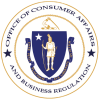- Office of Consumer Affairs and Business Regulation
Budget slip-ups are easily made but they can be embarrassing when they result in a debit card or ATM transaction rejection. That’s why many consumers rely on the overdraft protections provided by their financial institution. As this is Financial Literacy Month, the Division of Banks is breaking down what consumers need to know.
Overdraft protections are not standard. You must “opt-in” to your depository institution’s overdraft protection program, and check if a separate opt-in is needed for ATM & debit card transactions or these transactions may not be automatically covered. If you do sign-up for this feature, your bank links your checking account to your savings account, credit card, or a line of credit. If you make a purchase and there is not enough money in your primary account, the funds are automatically routed to ensure a successful transaction. Doing so eliminates overdraft fees initiated by your financial institution, as well as other fees such as insufficient funds fees or late fees resulting from a payment not being received on time.
Although linking your accounts for overdraft protection is free, a transfer fee may be charged to the account that received the transfer. Your financial institution will be able to explain to you what fees, if any, are associated with their overdraft protection programs.
Tips for consumers:
- Set-up account alerts to receive emails or text messages when your balance is low or when payments are due to avoid transfer fees.
- Monitor your account and transfer money into your checking account yourself before an overdraft occurs. Most financial institutions have phone apps that make these transactions this more convenient.
- Some banks’ and credit unions’ overdraft protection programs can have better terms than others. Ask your financial institution about the protections they offer and review others to see which one is best for you.
For more information on overdraft protections, checking or savings accounts, and financial services in general, visit the Division of Bank's website. Consumers may also contact the Division’s Consumer Hotline at 1-800-495-BANK (2265), for assistance.

